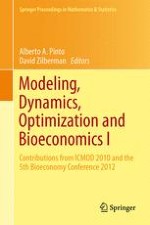2014 | OriginalPaper | Buchkapitel
9. Modelling Decentralized Interaction in a Monopolistic Competitive Market
verfasst von : Juan Gabriel Brida, Nicolás Garrido
Erschienen in: Modeling, Dynamics, Optimization and Bioeconomics I
Aktivieren Sie unsere intelligente Suche, um passende Fachinhalte oder Patente zu finden.
Wählen Sie Textabschnitte aus um mit Künstlicher Intelligenz passenden Patente zu finden. powered by
Markieren Sie Textabschnitte, um KI-gestützt weitere passende Inhalte zu finden. powered by
